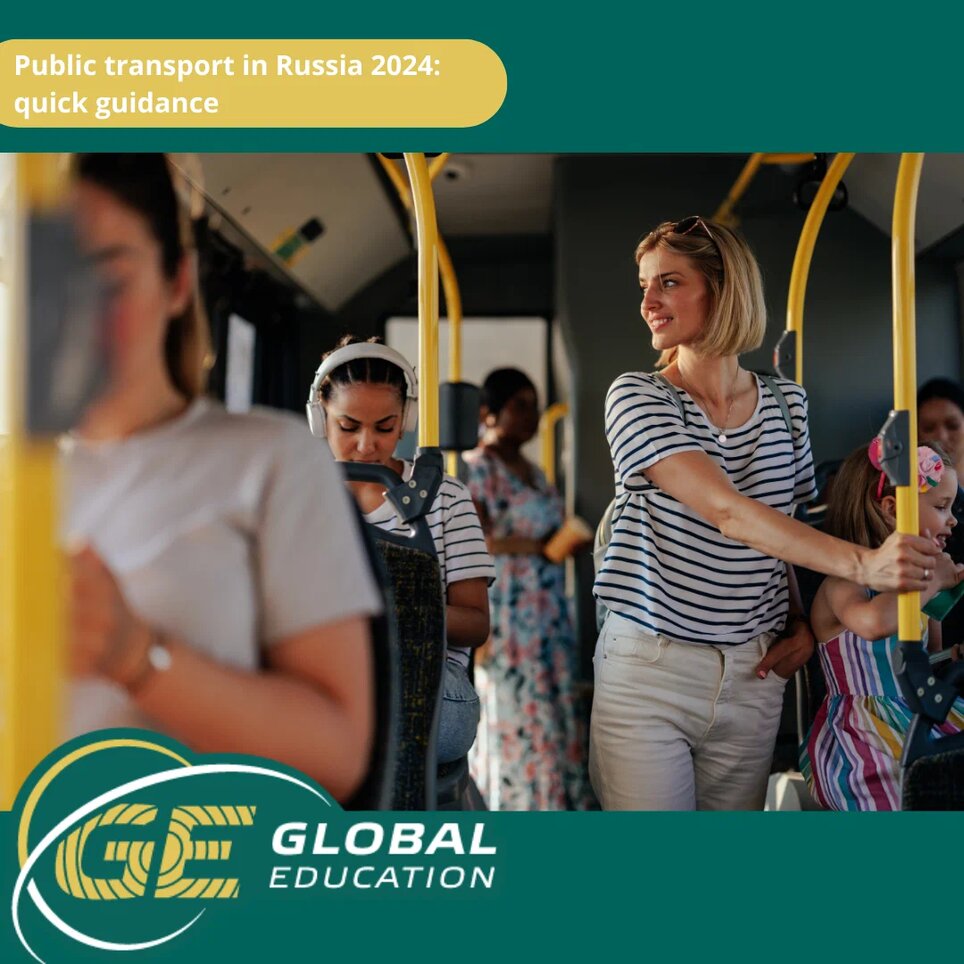Introduction
For young adults, whether they are students young professionals, public transportation is an essential part of daily life. Navigating the transport system of major Russian cities can seem daunting, especially for those visiting for the first time. This guide will help you understand the main types of public transport, offer valuable tips, and provide important information for comfortable travel across Russian cities.
Main Types of Public Transport in Russia
Metro
The metro is one of the most popular and convenient forms of transport in cities like Moscow and Saint Petersburg. Moscow's metro system, one of the busiest and most extensive in the world, comprises numerous lines that cover almost the entire city, making it an indispensable means of transportation.
Cost of Metro Travel (Moscow):
Approximately $0.70 per trip with the "Troika" card.
Cost of Metro Travel (Saint Petersburg):
Approximately $0.60 per trip with the "Podorozhnik" card.
Cost of Metro Travel (Moscow):
Approximately $0.70 per trip with the "Troika" card.
Cost of Metro Travel (Saint Petersburg):
Approximately $0.60 per trip with the "Podorozhnik" card.
Buses, Trams, and Trolleybuses
Bus, tram, and trolleybus networks play a significant role in the transport system of Russian cities. They connect areas not served by the metro and often represent a more economical way to travel.
Cost of Bus, Tram, or Trolleybus Travel (Moscow):
Approximately $0.70 per trip with the "Troika" card.
Cost of Bus, Tram, or Trolleybus Travel (Saint Petersburg):
Approximately $0.60 per trip with the "Podorozhnik" card.
Cost of Bus, Tram, or Trolleybus Travel (Moscow):
Approximately $0.70 per trip with the "Troika" card.
Cost of Bus, Tram, or Trolleybus Travel (Saint Petersburg):
Approximately $0.60 per trip with the "Podorozhnik" card.
Marshrutka (Minibuses)
Marshrutkas are small buses oruses that follow fixed routes. Although they are often crowded, marshrutkas can be a convenient and quick way to reach your destination.
Cost of Marshrutka Travel (Moscow and Saint Petersburg):
Varies, but typically around 1−1−1.50 per trip.
Cost of Marshrutka Travel (Moscow and Saint Petersburg):
Varies, but typically around 1−1−1.50 per trip.
Using Public Transport in Moscow
Purchasing Tickets and Travel
To travel in Moscow, you will need a "Troika" card — a universal pass that works on all types of public transport. You can purchase and top up these cards at metro stations, in self-machines, and at some kiosks.
Navigating the Metro
Understanding the Moscow metro system is crucial for efficient travel. Metro maps are available at every station and inside the trains, as well as in mobile applications. Becoming familiar with key lines like the light-green, red, and dark-blue lines is particularly important, as they intersect the city's major transport hubs.
Saint Petersburg's Transport System
Metro of Saint Petersburg
Saint Petersburg's metro is renowned for its depth and architectural beauty. It consists of 5 lines covering the city's main areas. Travel tickets can be purchased at stations, and the "Podorozhnik" card provides access to all types of public transport.
Surface Transport
Buses, trams, and trolleybuses are also widely used in Saint Petersburg. To make your travel easier, we recommend using transport tracking applications such as Moovit or Yandex.Transport.
Public Transport in Other Major Cities
Kazan
Kazan boasts a well-developed transport system that includes a metro, buses, and trolleybuses. The Kazan metro is relatively small but very convenient for travel along the main routes.
Cost of Metro Travel (Kazan):
Approximately $0.50 per trip.
Cost of Bus and Trolleybus Travel (Kazan):
Approximately $0.40 per trip.
Cost of Metro Travel (Kazan):
Approximately $0.50 per trip.
Cost of Bus and Trolleybus Travel (Kazan):
Approximately $0.40 per trip.
Nizhny Novgorod
Besides buses and trams, Nizhny Novgorod also has a metro that connects the city's vital parts. The city provides wide opportunities for using electric scooters and bicycles.
Cost of Metro Travel (Nizhny Novgorod):
Approximately $0.40 per trip.
Cost of Bus and Tram Travel (Nizhny Novgorod):
Approximately $0.40 per trip.
Cost of Metro Travel (Nizhny Novgorod):
Approximately $0.40 per trip.
Cost of Bus and Tram Travel (Nizhny Novgorod):
Approximately $0.40 per trip.
Tips for a More Comfortable Transport Experience
Apps and Services
Using mobile apps for route planning and tracking real-time transport arrivals can significantly ease your travel. Apps like Yandex.Maps, 2GIS, and Google Maps are excellent assistants.
Safety and Convenience
- Always check your route in advance and allocate enough time for your journey.
- Keep your valuables close and be aware of your surroundings, especially during peak hours.
- If you get lost or need help, don't hesitate to reach out to metro staff or the police.
Conclusion
Navigating public transport in major Russian cities becomes simpler with the right approach and preparation. We hope our tips and information will help you feel more confident and comfortable during your travels in Russia. Remember, understanding the transportation system not only saves you time but also makes your stay in the city more enjoyable and productive.
